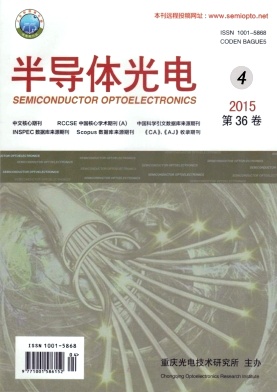半导体光电, 2015, 36 (4): 650, 网络出版: 2015-09-08
基于HMM的手势轨迹识别方法及应用
Applications and Recognition of Gesture Trajectory Using HMM
手势轨迹 方向角 隐马尔科夫模型 最大概率序列 Kinect Kinect gesture trajectory direction angle HMM maximum probability sequence
摘要
结合基于深度图像的手势分割不易受光照、背景变化等诸多因素影响的特点, 提出一种基于隐马尔可夫模型(HMM)的动态手势轨迹识别方法。首先采用Kinect传感器获取手势的运动轨迹, 利用模板匹配定标起始点, 速度变化确定结束点, 然后对轨迹进行高斯滤波预处理操作, 再对手势轨迹进行方向角的特征提取, 最后利用多观察值序列的Baum-Welch算法对HMM进行轨迹样本的训练, 并用Viterbi算法求取最大概率序列的方法来实现轨迹识别。实验表明, 该方法的实时性高、鲁棒性强, 并成功运用到电视的遥控模块中。
Abstract
Combining with the characteristic of gesture segmentation based on the depth image, which is less susceptible to light, background and other factors, a method of dynamic gesture tracks recognition based on hidden Markov model (HMM) was proposed. Firstly, the Kinect sensor was used to get gesture trajectory, template matching was applied to sign the starting point and determine the end point depending on the speed change. Then the pre-processing operations of the Gauss filter were taken to optimize the trajectory, and extract the feature of the gesture trajectory’s direction angles. Finally, it is to train the sample trajectory for HMM by multiple observations based Baum-Welch algorithm and apply the method of determining the maximum probability sequence by Viterbi algorithm to recognize trajectory. Experimental results show that this method has high real-time performance and robustness and has been applied to the control module of televisions.
张毅, 吴施海, 罗元. 基于HMM的手势轨迹识别方法及应用[J]. 半导体光电, 2015, 36(4): 650. ZHANG Yi, WU Shihai, LUO Yuan. Applications and Recognition of Gesture Trajectory Using HMM[J]. Semiconductor Optoelectronics, 2015, 36(4): 650.



